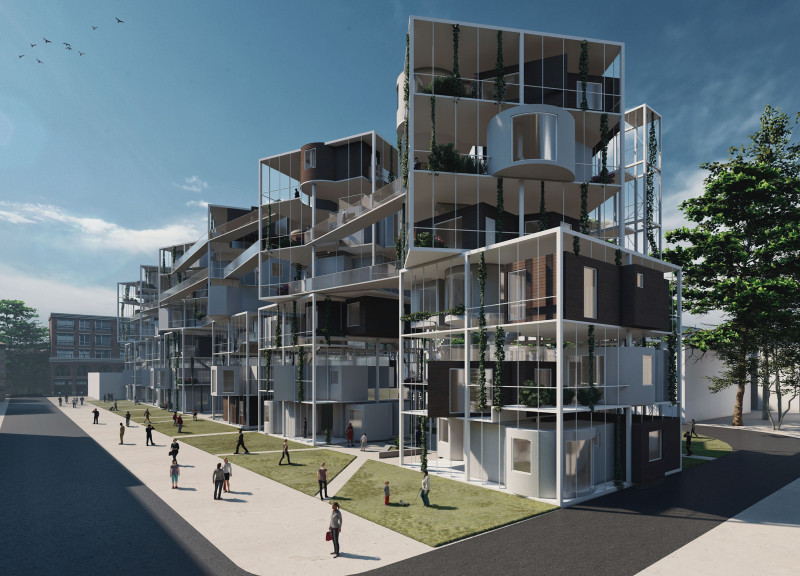5 key facts about this project
The architectural design incorporates a range of apartment configurations, including single, couple, and family units. This variety enables the project to cater to the needs of different demographics, promoting inclusivity. The structure features a façade composed predominantly of high-performance glass and wood, allowing natural light to permeate the interiors while maintaining energy efficiency. The visual appeal of alternating solid and void sections contributes to the overall character of the building.
Sustainability is a key aspect of the design. The building utilizes eco-friendly materials, such as wood and concrete, which not only provide structural integrity but also enhance the aesthetic connection to the natural environment. Green roofs and communal gardens further integrate ecological considerations into the project, promoting biodiversity and outdoor engagement.
Consideration is given to spatial organization within the project. The staggered arrangement of units creates opportunities for shared balconies and terraces, encouraging community interaction. Ground-level communal spaces are strategically placed to serve as hubs for residential activities, enhancing social dynamics among residents.
The integration of shared areas within the Pixel Housing project distinguishes it from other housing developments. By prioritizing communal gardens and social zones, this design fosters relationships among residents, transitioning the concept of individual living spaces into a collective lifestyle. This focus on community-oriented architecture addresses the challenges of urban isolation and promotes a sense of belonging.
Exploring the architectural plans, sections, and designs will provide further insights into how these elements contribute to the overall function and experience of the Pixel Housing project. The material choices, spatial configurations, and community-focused approach are central to understanding this innovative architectural endeavor. Review these details to appreciate the comprehensive design ideas encapsulated within the project.























